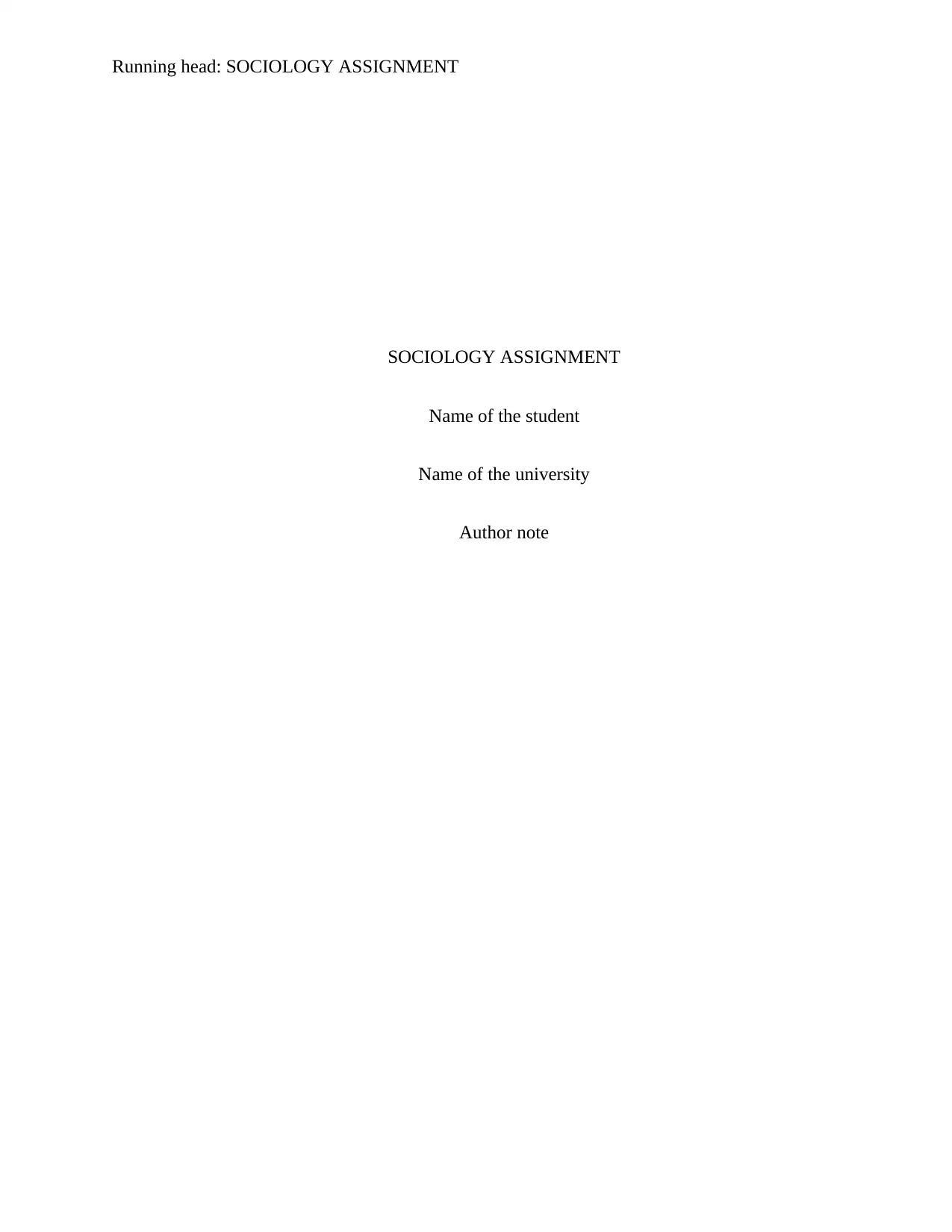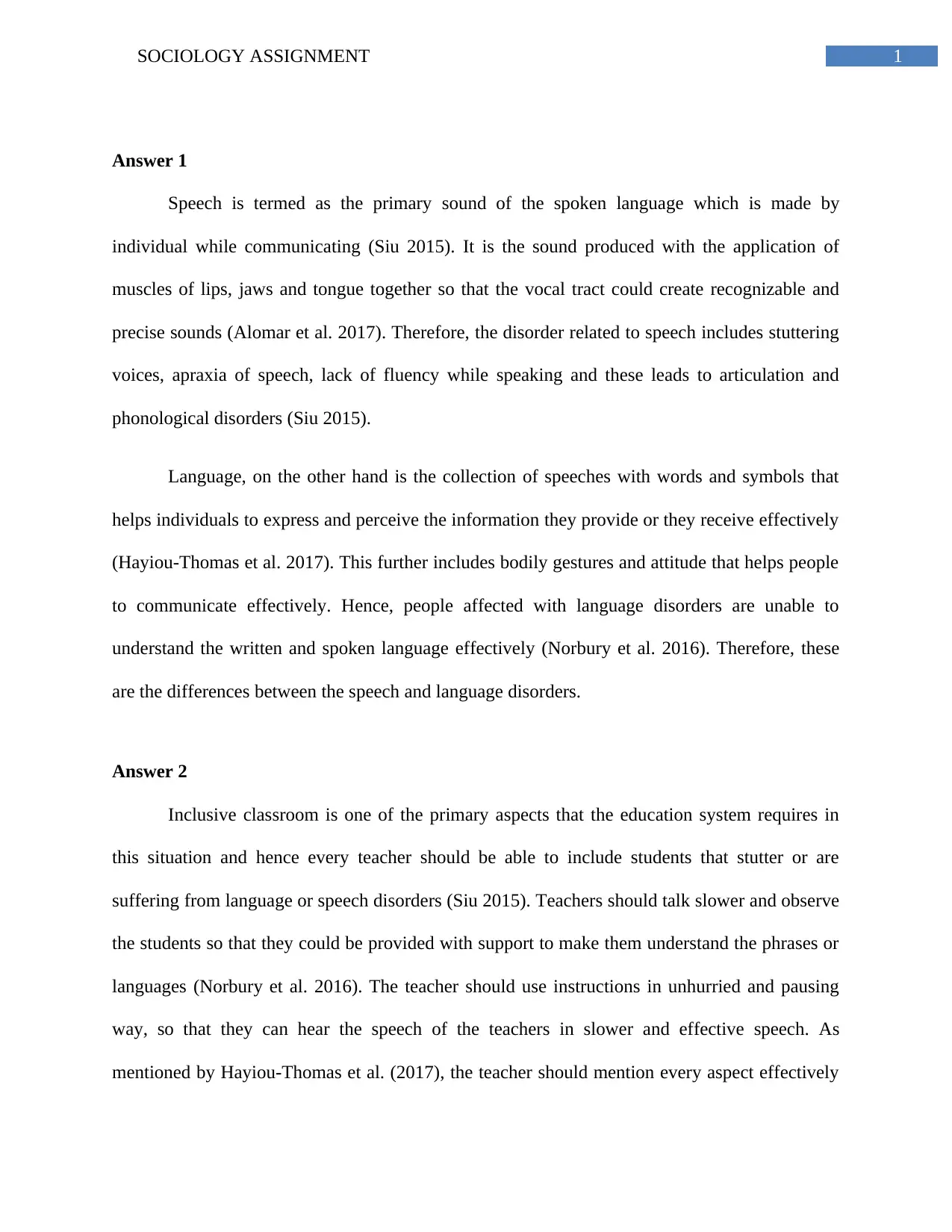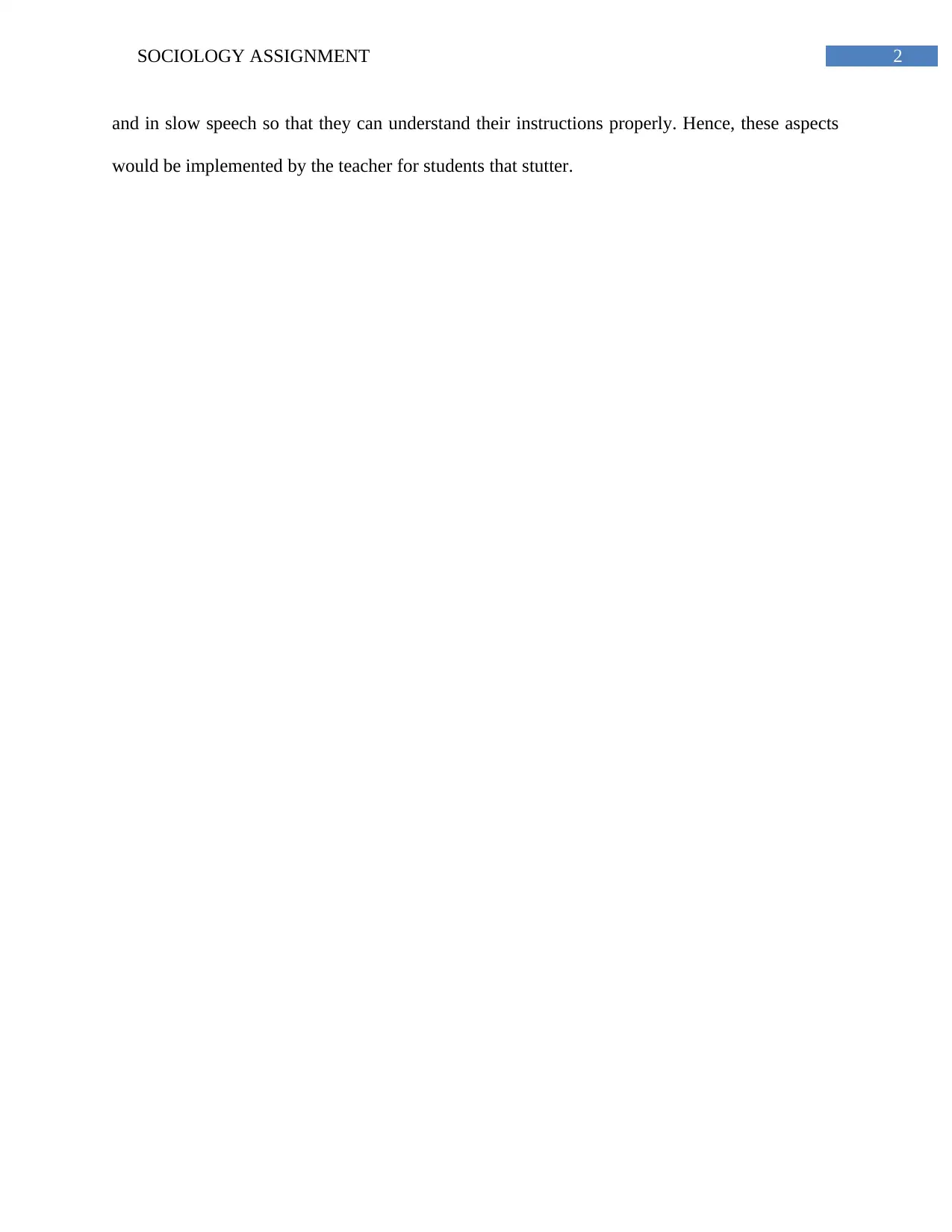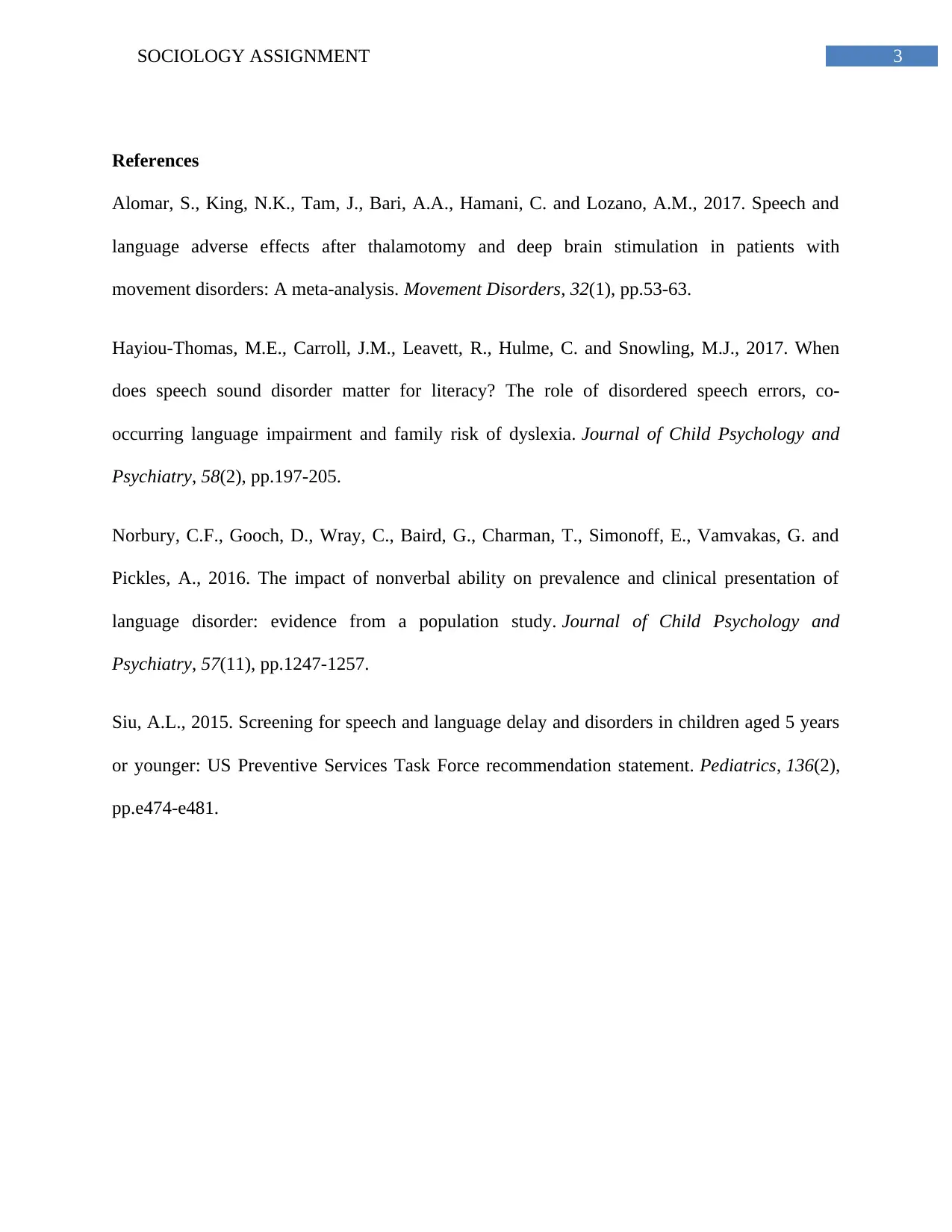Sociology Assignment: Speech, Language, and Inclusive Classrooms
VerifiedAdded on 2022/11/29
|4
|577
|107
Homework Assignment
AI Summary
This sociology assignment explores the distinctions between speech and language disorders, highlighting the physiological and communicative aspects of each. The assignment discusses how speech, involving the physical production of sounds, differs from language, which encompasses the broader system of symbols and communication. It also addresses the importance of inclusive classrooms for students who stutter or have language impairments. The assignment emphasizes the need for teachers to adapt their communication style, such as speaking slowly and providing clear instructions, to support these students. References to relevant literature underscore the importance of early intervention and supportive educational practices in addressing these challenges. The assignment aims to provide insights into creating an inclusive learning environment and catering to the needs of students with speech and language disorders.
1 out of 4





![[object Object]](/_next/static/media/star-bottom.7253800d.svg)